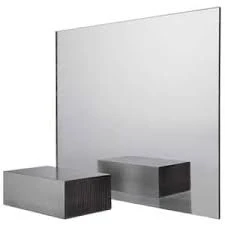

Understanding Insulating Glass Units A Comprehensive Guide
Insulating Glass Units (IGUs) are essential components in modern architecture and building design, contributing to energy efficiency, comfort, and aesthetics in residential and commercial properties alike. These units are designed primarily to reduce heat transfer and improve thermal insulation, making them an integral part of energy-efficient building strategies.
What Are Insulating Glass Units?
An insulating glass unit consists of two or more glass panes separated by a spacer and hermetically sealed to create an air or gas-filled space between them. This configuration greatly reduces the transfer of heat and sound, as the trapped air or gas acts as an insulating barrier. Common gases used in IGUs include Argon and Krypton, both of which offer superior thermal performance compared to regular air.
Benefits of IGUs
The advantages of using insulating glass units are manifold. Firstly, they enhance energy efficiency by minimizing heat loss in winter and heat gain in summer. This property can significantly reduce heating and cooling costs in buildings, making IGUs an economically viable choice in the long run.
Secondly, IGUs contribute to improved indoor comfort. By providing effective thermal insulation, they help maintain a stable indoor temperature, reducing drafts and the influence of outdoor weather conditions. Additionally, many IGUs come with coatings that can further reduce glare and ultraviolet (UV) radiation, protecting furnishings and skin from harmful exposure.
Finally, insulating glass units can enhance sound insulation. The design of IGUs effectively dampens outside noise, making them particularly valuable in urban environments where noise pollution is a concern. This feature makes homes and offices more peaceful spaces, conducive to relaxation and productivity.

Types of Insulating Glass Units
Insulating glass units come in various configurations to suit different needs. The most common types include double-glazed and triple-glazed units. Double-glazed units, consisting of two panes of glass, are widely used in residential applications, while triple-glazed units, consisting of three panes, are gaining popularity in regions with extreme weather conditions due to their superior insulation properties.
Additionally, IGUs can be customized with various coatings, such as Low-E (low emissivity) coatings, which reflect infrared energy while allowing natural light to enter. This technology ensures that homes remain warm in winter and cool in summer while maximizing daylight.
Installation and Maintenance
The installation of insulating glass units should be carried out by professionals to ensure proper sealing and fitting. An improperly installed unit can compromise its insulation properties and lead to condensation between the glass panes. Regular checks can help detect issues like seal failure, which might manifest as fogging or moisture buildup.
Maintenance is minimal, but it's essential to clean the exterior surfaces of the glass to ensure they maximize light entry. Proper upkeep can significantly extend the lifespan of IGUs, making them a worthwhile investment for property owners.
Conclusion
In conclusion, insulating glass units are pivotal in enhancing energy efficiency, comfort, and aesthetic appeal in modern buildings. With their various types and customizable features, IGUs cater to diverse architectural needs while providing the benefits of thermal insulation and noise reduction. Whether you are building a new home or renovating an existing one, considering IGUs is a step towards creating a more sustainable and comfortable living environment. As energy efficiency becomes increasingly important in our efforts to combat climate change, the role of insulating glass units will undoubtedly become more significant.